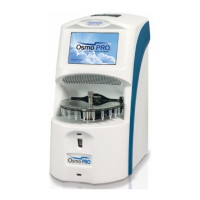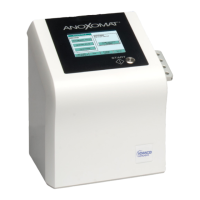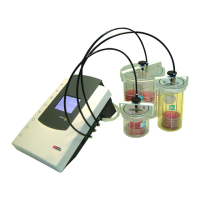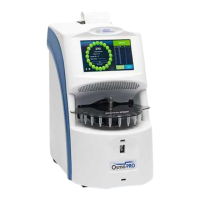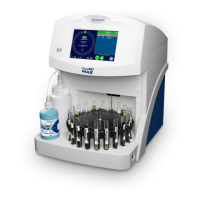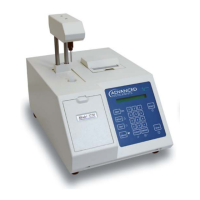Chapter 5 Calibration
43
OsmoTECH® Single-Sample Micro-Osmometer User Guide
4. Enter your password and press Enter.
The Calibration screen displays.
The following example shows the Calibration screen
for an instrument that is configured for 0, 50, 850,
and 2000 mOsm/kg H
2
O calibration.
The rows for the 0 and 2000 mOsm/kg HO
calibration standard only appear if each have been
enabled (see Configuring calibration access and
optional calibration).
5. Follow the on-screen instructions to test samples
from each specified standard five times.
NOTE: You will test samples of known standards:
• 50 and 850 mOsm/kg HO by default
• 0 mOsm/kg HO if enabled
• 2000 mOsm/kg HO if enabled
NOTE: Use the method for sample testing described
in Testing procedure.
• After each successful calibration test, a green
checkmark appears in the calibration matrix and
the instrument prints “DONE” for that calibration
test.
• If a single calibration test fails or is canceled, the
system prompts for a retest using a new sample.
• If two failures occur within the same standard
group, that calibration fails and the screen displays
the message “Two replicate failures”.
• Upon completion of the last calibration test, the
system displays a “Calibration successful” message
or the reason for failure.
6. Click OK to close the success (or failure) message.
• When you close a success message, the system
returns you to the Home screen.
• When you close a failure message, the system
clears all checkmarks and returns you to the
Calibration screen. From there, you can restart the
calibration or exit to the Home screen.
When calibration is successful, the instrument calculates
a new calibration slope and intercept and saves those
values to memory.
If a calibration test fails or is canceled for any reason,
the instrument does not save that calibration data;
instead, it maintains the last successful calibration.
The date of the last successful calibration is displayed
on the Calibration screen.
